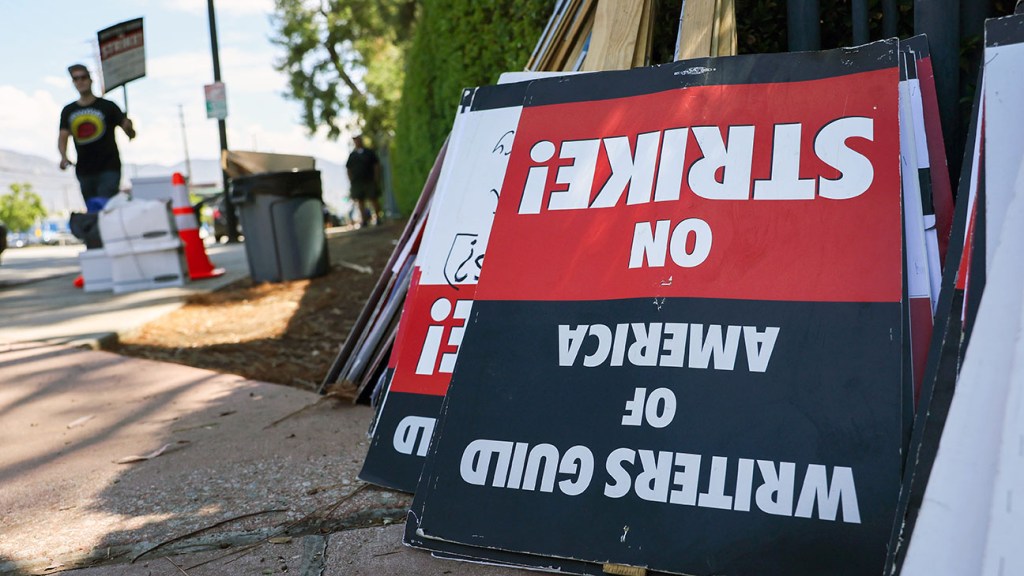Social Media As An Economic Barometer: Decoding Recession Signals

Table of Contents
Analyzing Consumer Sentiment on Social Media
Social media provides a real-time window into the collective psyche of consumers. By analyzing the sentiment expressed in posts and comments, we can gain valuable insights into the prevailing economic mood.
Increased Negative Sentiment & Anxiety
As a recession looms, anxieties surrounding finances and job security tend to rise. This translates to an increase in negative posts and comments on social media platforms. Tracking specific keywords is crucial for detecting this shift. Look for increases in hashtags and phrases like:
- #jobloss
- #layoffs
- #financiallystressed
- #recessionanxiety
- #unemployment
- #moneyworries
Sentiment analysis tools, which use natural language processing (NLP) to gauge the emotional tone of text, can quantitatively measure this shift in sentiment. These tools can analyze millions of posts, providing a comprehensive overview of consumer anxieties and their potential correlation with recession signals.
Shift in Consumer Spending Habits
Changes in consumer spending habits are a strong indicator of economic health. Social media provides a rich source of data for observing these shifts. Look for changes in conversation around:
- #budgeting
- #savingmoney
- #deals
- #discountcodes
- #affordability
- #couponing
A noticeable decrease in discussions around non-essential goods and services, coupled with an increase in posts focused on budgeting and saving, is a significant recession signal. For example, a drop in mentions of luxury brands or travel plans could foreshadow a slowdown.
Growth of "Frugal Living" Trends
During times of economic uncertainty, consumers often adopt more frugal lifestyles. This trend is clearly visible on social media platforms like TikTok, Instagram, and Pinterest, with a surge in content related to:
- #frugalliving
- #budgetingtips
- #DIY
- #secondhandfinds
- #thrifting
- #upcycling
The increasing popularity of these hashtags and related content reflects a shift in consumer priorities, prioritizing value and resourcefulness, a clear recession prediction indicator within consumer behavior.
Monitoring Brand Mentions and Industry Trends
Analyzing brand mentions and industry-specific conversations on social media can reveal valuable insights into economic health.
Decreased Brand Engagement
Reduced engagement with brand social media accounts – fewer likes, comments, and shares – often signifies decreased consumer confidence and spending. Monitoring key metrics such as:
- Engagement rate
- Reach
- Click-through rates
is crucial. A decline in these metrics, coupled with an increase in negative brand mentions and feedback, strongly suggests weakening consumer demand.
Changes in Industry-Specific Conversations
Analyzing conversations surrounding different industries reveals sector-specific economic impacts. For instance, a decline in discussions related to:
- Travel (#travelplans, #vacation)
- Luxury goods (#luxurybags, #highendfashion)
- Restaurants (#foodie, #datenight)
could indicate a slowdown in those specific sectors, reflecting broader economic trends and offering further insights for recession prediction.
Utilizing Social Listening Tools for Recession Prediction
Social listening platforms are invaluable for analyzing large volumes of social media data to identify emerging trends.
The Power of Social Listening Platforms
These platforms offer powerful capabilities, including:
- Real-time trend monitoring
- Sentiment analysis
- Keyword tracking
- Competitor analysis
Popular platforms include Brandwatch, Talkwalker, and Sprinklr. These tools can identify patterns and predict shifts in consumer behavior before they manifest broadly.
Data Interpretation and Limitations
It’s crucial to interpret social media data cautiously. While it provides valuable insights, it shouldn't be the sole basis for economic forecasting. Remember that:
- Social media usage is not representative of the entire population.
- Demographic biases exist.
- Sentiment can be subjective and influenced by external factors.
Therefore, social media data should be used in conjunction with traditional economic indicators for a more accurate and comprehensive analysis.
Conclusion
Social media has emerged as a valuable tool for understanding consumer sentiment and predicting economic shifts. By carefully analyzing social media trends, including changes in consumer spending habits, brand engagement, and the prevalence of frugal living discussions, businesses and economists can gain valuable insights into potential economic downturns. Utilizing social listening tools can further enhance this capability, offering a powerful approach to early recession detection. Stay ahead of the curve and leverage the power of social media as an economic barometer. Start monitoring relevant keywords and hashtags today to decode recession signals and proactively adapt your strategies for a changing economic landscape. Use social media for recession prediction effectively, and gain a competitive edge by understanding the nuances of consumer behavior during economic uncertainty.

Featured Posts
-
 Celtics Vs Heat April 2nd Where To Watch And Stream The Game
May 06, 2025
Celtics Vs Heat April 2nd Where To Watch And Stream The Game
May 06, 2025 -
 Hollywood At A Standstill The Joint Actors And Writers Strike
May 06, 2025
Hollywood At A Standstill The Joint Actors And Writers Strike
May 06, 2025 -
 Patrick Schwarzenegger In White Lotus Mother Maria Shriver Weighs In
May 06, 2025
Patrick Schwarzenegger In White Lotus Mother Maria Shriver Weighs In
May 06, 2025 -
 The Next Generation A Critical Look At A Websites Successor
May 06, 2025
The Next Generation A Critical Look At A Websites Successor
May 06, 2025 -
 Celtics Vs Suns April 4th Game Time Tv Broadcast And Live Stream Info
May 06, 2025
Celtics Vs Suns April 4th Game Time Tv Broadcast And Live Stream Info
May 06, 2025
Latest Posts
-
 The Librarians The Next Chapter Premiere Date Trailer And Poster Drop On Tnt
May 06, 2025
The Librarians The Next Chapter Premiere Date Trailer And Poster Drop On Tnt
May 06, 2025 -
 Warner Bros Discoverys 1 1 Billion Nba Advertising Loss A Deep Dive
May 06, 2025
Warner Bros Discoverys 1 1 Billion Nba Advertising Loss A Deep Dive
May 06, 2025 -
 Tnts The Librarians The Next Chapter Official Trailer Poster And Premiere Date Revealed
May 06, 2025
Tnts The Librarians The Next Chapter Official Trailer Poster And Premiere Date Revealed
May 06, 2025 -
 The Librarians The Next Chapter Tnt Unveils Trailer Poster And Premiere Date
May 06, 2025
The Librarians The Next Chapter Tnt Unveils Trailer Poster And Premiere Date
May 06, 2025 -
 Cord Cutters Guide Watching March Madness Online
May 06, 2025
Cord Cutters Guide Watching March Madness Online
May 06, 2025
